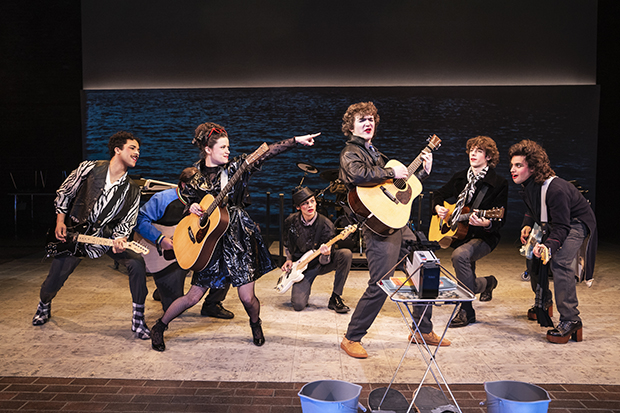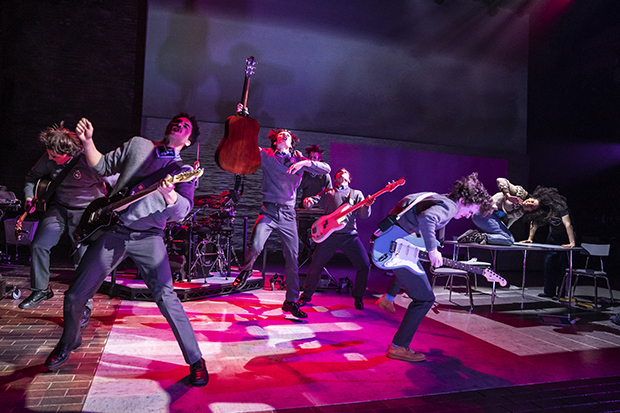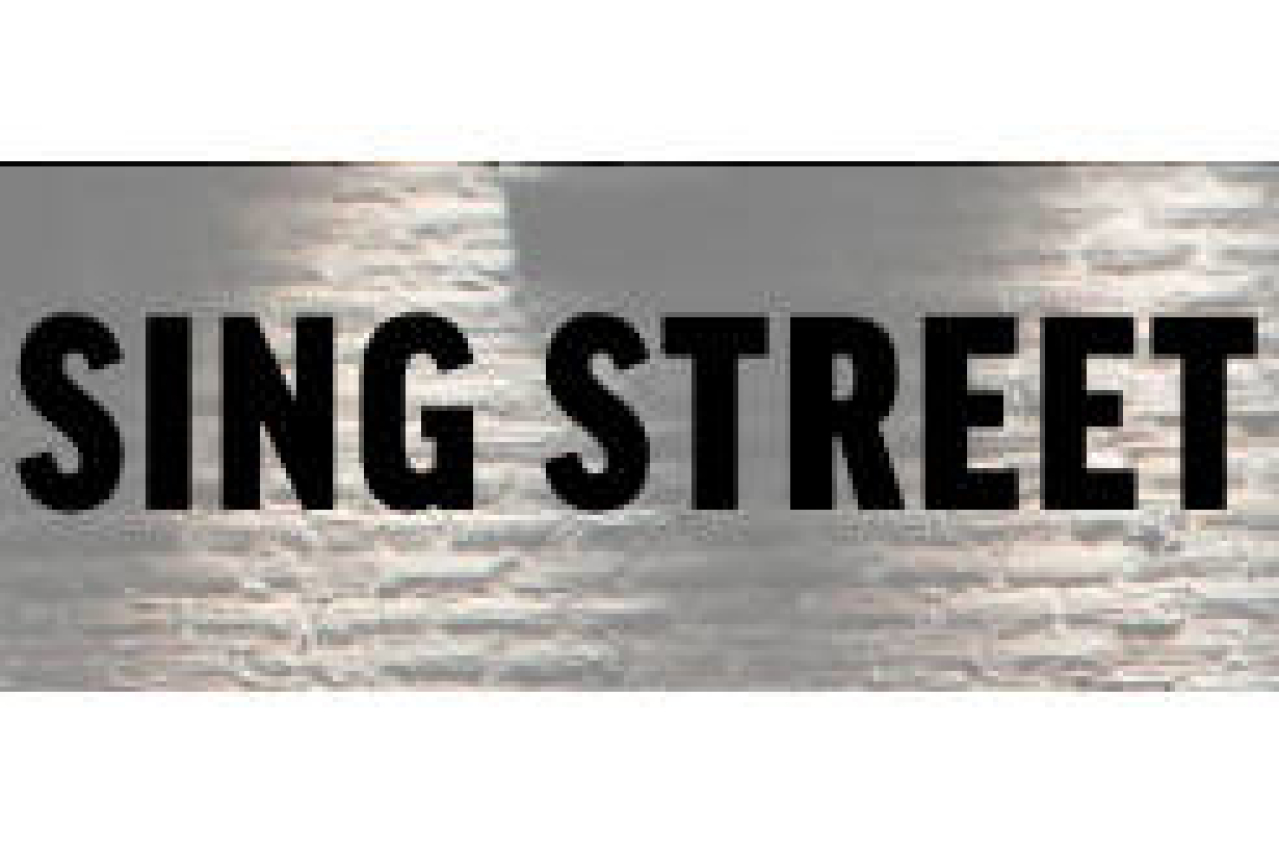Sing Street Is Positioned as the Next Once, but Lightning Hasn't Struck Twice

(© Matthew Murphy)
You might assume that Sing Street is the next Once, but you'd be wrong. Both productions hail from New York Theatre Workshop, both are based on much-loved Irish films directed by John Carney, and both have books by playwright Enda Walsh, sets by Bob Crowley, and orchestrations by Martin Lowe, who all won Tonys back in 2012 when Once transferred to Broadway. What the well-meaning but vapid Sing Street is missing is magic.
Carney's 2016 film — and in turn, Walsh's play-with-music — is set in Dublin in the early 1980s, a time of great economic turmoil. Conor Lawlor (Brenock O'Connor, a charismatic leading man) is a high schooler who has been transferred from a fancy private school to the local Christian Brothers academy, Synge Street, so his warring parents (Amy Warren and Billy Carter) can save money.
After Conor meets Raphina (Zara Devlin), an aspiring model, he forms a band with his mates in order to impress her. But not so fast. Schoolmaster Brother Baxter (Martin Moran, too benign) is determined to shut Conor's band down for its insolence (and for the decidedly unmasculine way each member wears makeup). And Raphina herself is London-bound with her much older boyfriend.
Sing Street isn't a particularly insightful film; the main idea that Carney puts forth — that music has the power to bring people together and change lives — is expressed with much more depth in Once and even 2013's Begin Again. What Walsh's stage version retains from the screen version, despite streamlining the plot a bit, is its shallowness. The characters are superficial and their struggles obvious. You won't be wondering whether Conor will get the girl in the end, or if Brother Baxter will get his comeuppance.
You probably won't even care, which is an even bigger problem when you're sitting through a two-and-a-half-hour musical. It needs to dig deeper and give all the characters more, instead of just skimming a well-trodden surface. (Oddly, the show is framed around Conor's depressed older brother, a device that doesn't pay off, no matter how finely played by Gus Halper.)

(© Matthew Murphy)
Furthermore, the staging and physical production lacks specificity and color. There's no sense of time and place in Rebecca Taichman's production; if they weren't talking in Irish accents (which, for the most part, are all over the place) and wearing '80s outfits, Sing Street could be set anywhere, whenever. Though Crowley's set is an undefined limbo of rolling furniture, his punky costumes are far more fun and do a great deal in creating a defined milieu that Sing Street otherwise lacks.
The strongest point is obviously the music, written for the screen by Carney and former Danny Wilson front man Gary Clark. While it doesn't seem like they've written new songs for the stage, Lowe translates the music lovingly and the young cast performs it live with vigor and excitement. The songs are authentically Irish, authentically New Wave, and add a much-needed jolt of energy to an otherwise listless evening. Sing Street wants to be the next Once, but lightning has not struck twice. This is one show you won't be falling slowly for.











